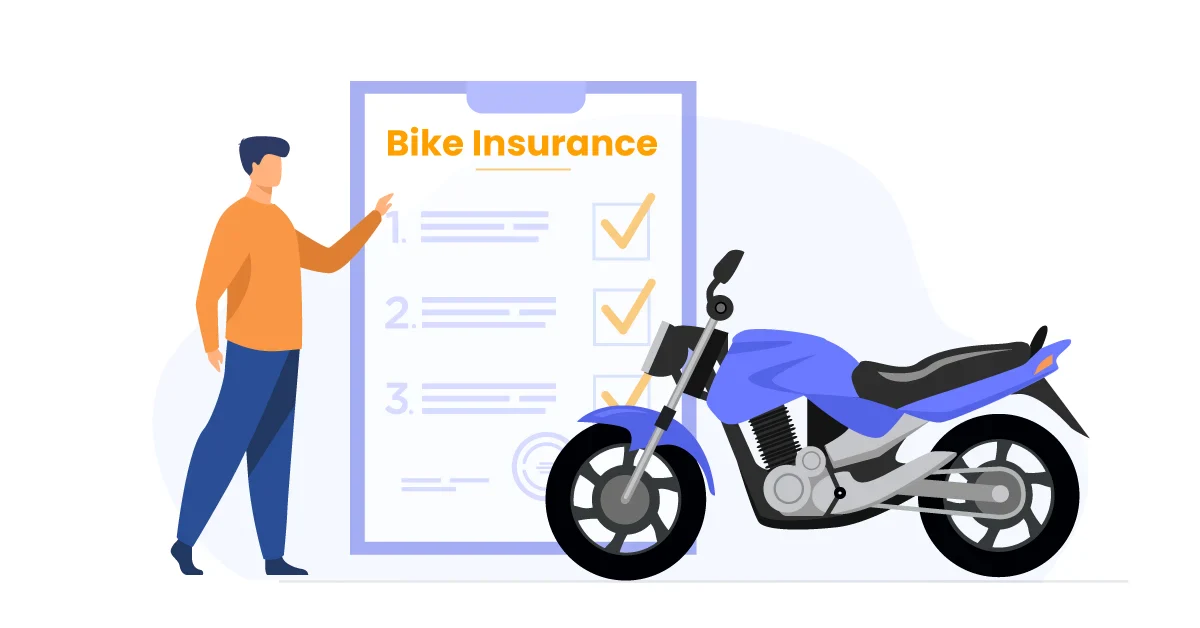Own Damage v/s Third Party Cover Under Two Wheeler Insurance
In India, individuals primarily favor two wheelers as a mode of transportation due to the significant traffic and dense crowds on Indian roads. Therefore, two wheeler insurance offers a variety of benefits and conveniences in both types of policies: own-damage cover and third-party cover. Read this article for a detailed comparison between own-damage and third-party cover under bike insurance.
Two Wheeler Insurance holds Significant Importance
As a bike owner, making the crucial decision to buy the right insurance plan that fulfills all your needs within a budget is important. Therefore, you should carefully consider the coverage in your insurance policy, as it provides a safety cover against any financial loss and legal liabilities in case of mishaps such as a road accident.
Therefore, considering factors such as IDV, bike model, engine capacity, bike age, and geographical area is always a wise decision when purchasing any type of bike insurance. It is advisable to search, compare, and study various available options on the internet and choose a plan accordingly.
Benefits of Own-damage Two Wheeler Insurance
The Insurance Regulatory and Development Authority of India (IRDAI) permitted bike owners from different insurers to purchase an own-damage cover in September 2019 according to their specifications. This policy protects your own vehicle against any losses or damages caused due to a mishap.
All new bike owners are no longer obligated to purchase a long-term insurance policy; instead, they can obtain a standalone own-damage plan for 1 year. This plan covers the insured bike but requires annual renewal. Furthermore, policyholders can enhance their own-damage policy by choosing add-on cover under it.
Benefits of Third-party Two Wheeler Insurance
In India, according to the Motor Vehicle Insurance Act, 1988, third-party bike insurance is mandatory. It provides financial protection for the loss or damages caused to your own vehicle, as well as to third parties in road accidents.
If you are involved in a bike accident and sustain injuries yourself and to a third party, you might end up spending a hefty amount on treatment for both. However, with the help of third-party bike insurance, all medical expenses are covered. It also compensates up to Rs 7.5 lakhs in case of damage to the third party. Thus, this cover protects you if the third party is not insured.
Difference between Own-damage and Third-party Two Wheeler Insurance
The detailed comparison chart below shows all the features and benefits of own-damage and third-party cover.
| Point of Basis | Own-damage Cover | Third-party Cover |
|---|---|---|
| Definition | The own-damage cover, a type of bike insurance plan, provides financial coverage for the damaged bike of the policyholder. While not compulsory, it offers greater protection than just third-party insurance. | The Motor Vehicle Act of 1988 mandates bike owners to have a third-party bike insurance policy, which provides coverage for third-party liabilities, including injuries, death, and property damage. |
| Coverage | This plan only covers own damages. | This plan covers only third-party liabilities. |
| Add-ons | You can purchase add-ons with an own-damage cover. | With third-party bike insurance, you cannot upgrade your basic policy with add-on covers. |
| Personal Accident Cover | It does not provide a personal accident cover. | Third-party bike insurance provides the bike owner with a personal accident cover of Rs 15 lakh. |
| Premium Price | The premium price increases over time. | It typically has a lower premium than the own-damage cover. |
| Depreciation Rate | The depreciation rate affects the insurance premium. | The depreciation rate does not affect the premium. |
Consider factors before buying a Bike Insurance Policy
Complimentary Services
Always select an insurance provider that distinguishes itself from its competitors by offering unique service benefits along with the policy. Seek out their complimentary services as an added benefit and make your decision accordingly
Buying and Claiming Process
Before purchasing a bike insurance policy, consider the buying and claiming process as a major factor. Search for different insurers on the internet and then decide which one offers a hassle-free online buying and claim settlement process.
Insured Declared Value
The insurance company provides the maximum amount, known as IDV, in cases of total loss or theft of your bike. A higher IDV results in a higher reimbursement amount in the event of total loss. While low premiums are typically appealing, they may not yield maximum financial benefits. Therefore, it is advisable to check not only the premium amount but also your IDV.
24x7 Customer Support
Ensure that your bike insurer is always available for you whenever you need them, as a well-reputed insurance company is equally renowned for providing unparalleled 24x7 customer support.
Claim Settlement Speed & Ratio
Before purchasing any type of bike insurance policy, ensure to check the claim settlement ratio of different insurers. This ratio will provide you with an idea of how smooth and successful their claim process is.
Conclusion
To make an informed decision about buying a bike insurance policy according to your requirements and budget, evaluate your choices by referring to the comparison chart we have shared. This chart features all the benefits and limitations of both own-damage cover and third-party bike insurance.

